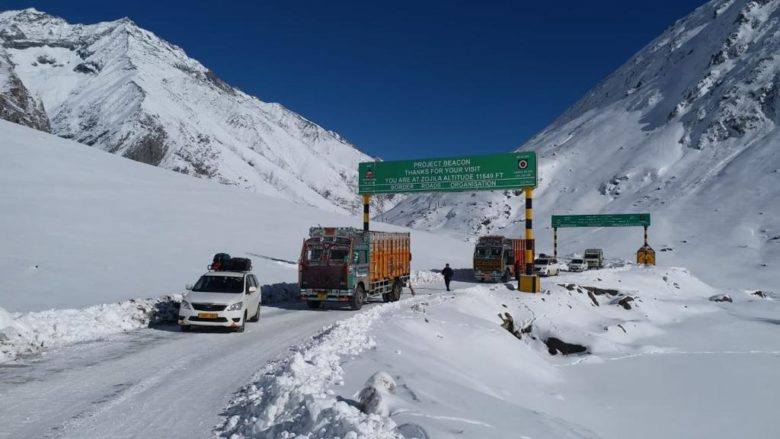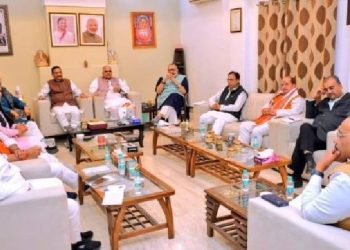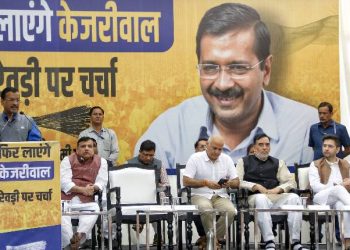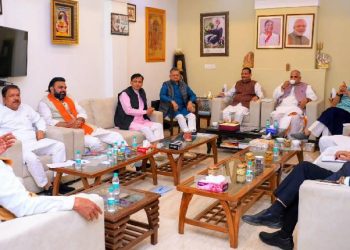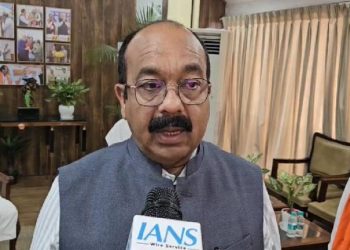Srinagar/New Delhi: In the past two years, Jammu and Kashmir has witnessed unprecedented development in every sector, including roads and highways.
The Srinagar-Leh National Highway, which used to remain closed for vehicular traffic from November to April every year, is open even in January this year as the Border Roads Organization (BRO) has been equipped with state-of-the-art snow cutters and other machinery.
The biggest challenge for the BRO is to keep the strategic Zojila Pass — located at an altitude of 11,643 ft on Srinagar-Sonamarg-Gumri road — open. This time around, the BRO has created history by keeping it open even beyond December.
In 2021, Zojila Tunnel, that would turn Srinagar-LehNational Highway into an all-weather road, witnessed good progress. According to the officials, about 25 per cent of the excavation work has been completed so far on the Zojila Tunnel.
The people employed in construction of the tunnel have been braving all the odds and weather vagaries to ensure that the project is completed on time. The 18-km long Zojila Tunnel is expected to be completed by 2023. It will be Asia’s longest bidirectional tunnel.
On September 28, 2021, Union Road Transport and Highways Minister Nitin Gadkari had reviewed the progress of the Zojila Tunnel project and lauded Megha Engineering and Infrastructure Limited, the construction company assigned with the job to build this tunnel.
Gadkari had expressed satisfaction with the speed of the work and emphasised on the need to put in efforts to keep the strategic highway open for more months till the work on the tunnel gets completed.
Keeping Srinagar-Leh National Highway open for traffic beyond December has not been an easy job for the BRO. The Zojila Pass poses unique challenges of freezing temperatures and lack of oxygen and frequent avalanches. At present, more than 20 heavy-duty snow cutters have been pressed into service and the BRO men are working 24×7 to make ‘Mission Impossible’ possible.
Kashmir, Ladakh opening up
After August 5, 2019 — when the Centre abrogated J&K’s special status and divided it into two Union Territories — Jammu and Kashmir has seen progress in every sphere of life. Kashmir and Ladakh regions, which were considered as landlocked regions, are opening up and are all set to remain connected with the rest of the country throughout the year.
Since 1947, the Srinagar-Jammu National Highway has remained in news due to it getting blocked in winter months. But this year it has remained open. The newly-constructed Nayug Tunnel that connects Banihal with Qazigund has made travel easier for the commuters.
Besides reducing the travel time between Jammu and Srinagar, the tunnel has saved people from moving through avalanche prone zones. The Chenani-Nashri Tunnel too has brought Srinagar close to Jammu. The work between Ramban to Banihal stretch on the Srinagar-Jammu National Highway is going on at full swing and once it is completed, Kashmir getting disconnected from the rest of the country will become history.
The Centre led by Prime Minister Narendra Modi has put in sincere efforts during the past seven years. The former regimes at the Centre did come up with many proposals to integrate Kashmir with the Union of India completely, but fell short of executing the plans.
The present dispensation in New Delhi has proven beyond doubt that it means business and it’s taking all the steps to ensure that Kashmir and Ladakh regions get all the possible facilities.
Scrapping of special status paved the way
The scrapping of J&K’s special status has paved the way for complete integration of the Himalayan region into the Union of India. J&K becoming like other parts of the country has proved to be a win-win situation for the common man of J&K.
The denizens of J&K were kept deprived of the benefits they deserved. The rulers who ruled the erstwhile state promised moon and stars to the people but failed to deliver. From 1947 to 2019, they just kept people busy by making announcements about the project reports being ready.
But all these developments remained confined to papers only. After 2019, the Centre has worked on these project reports and has ensured that promises made to the people of J&K are fulfilled. Many development projects that were in limbo or incomplete have become a reality and many more are likely to come up in the next few years.
The train from Kashmir to Kanyakumari is all set to become a reality. The work on the last phase of railways between Katra and Banihaltoo is in its final stage.
Connectivity holds the key and the present government is leaving no stones unturned to ensure that Kashmir and Ladakh regions get connected once for all.
‘Kings of Kashmir’ struggling to remain relevant
The politicians who ruled Jammu, Kashmir and Ladakh for the past 70 years need to ask themselves why they couldn’t do justice with these regions? What stopped them from putting the Himalayan region on the path of progress and development?
It appears that they were not sincere and wanted uncertainty to prevail so that they could remain the undisputed rulers. The ones who used to consider themselves as ‘Kings of Kashmir’ are now struggling to remain relevant as many impossible errands have been made possible by the present government.
Some Kashmir-based leaders have been claiming that nothing has changed during the past two years. It seems they have closed their eyes and are in no mood to see how J&K has changed. When they ruled Jammu and Kashmir, their politics revolved around militancy and resolution of the so-called Kashmir problem. They never bothered to look beyond the web they had woven around them.
The present rulers in Jammu and Kashmir are not making any noise. They are not seeking any publicity for the work they are doing. They seem determined to ensure that the erstwhile princely state witnesses fast-paced development and a common man of J&K gets what he deserves.
The agencies that have been assigned various development projects are being monitored and held accountable. The highways and roads are the lifelines of any place and both the newly-carved out Union Territories, i.e., J&K and Ladakh, are moving towards getting the best possible connectivity.
The things are moving at a fast pace and no one is being allowed to become complacent. The results and change are visible, only those people are unable to see them who couldn’t deliver despite getting multiple chances.
(IANS)



